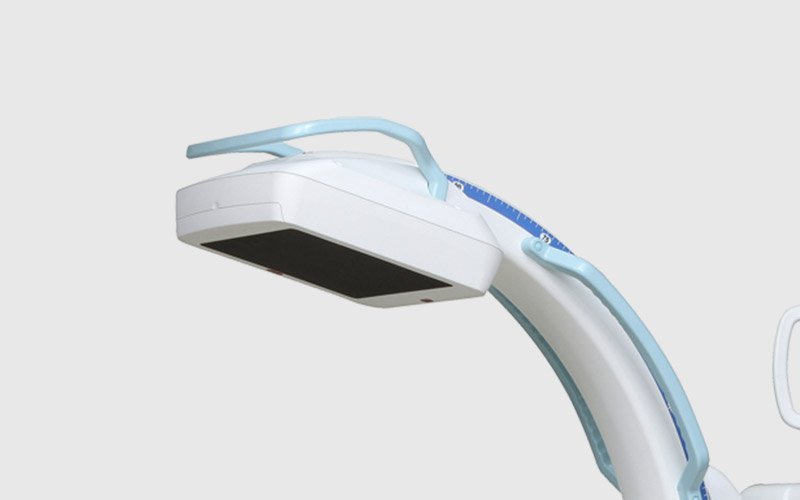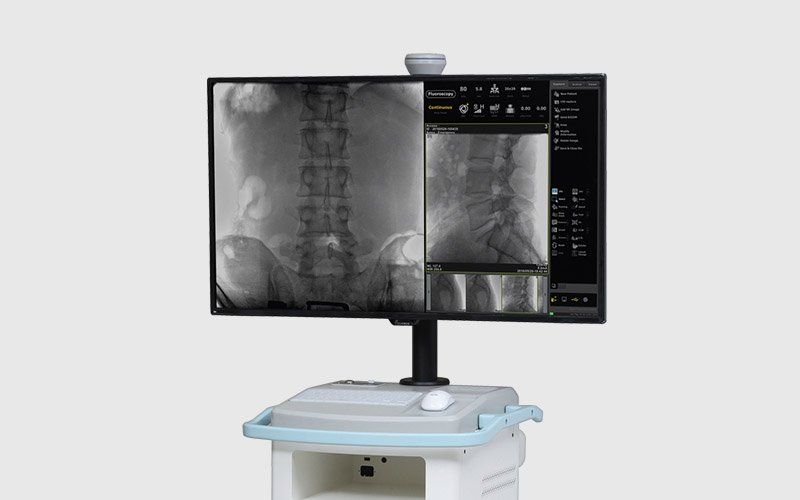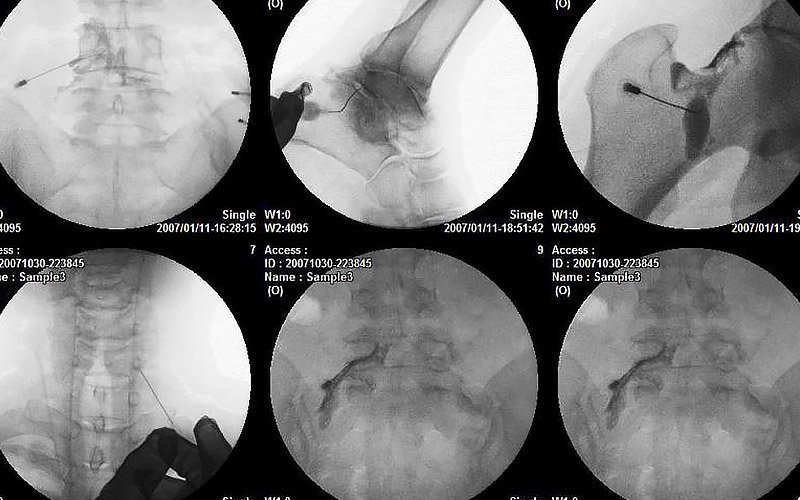When looking at surgical c-arm systems everyone’s first concern is the c-arm image quality, as the goal with a c-arm is to be able to see the anatomy as clear as possible. However, with that said what determines image quality? Is it the image resolution output of the digital camera? Is it the x-ray power? How about the monitors on the system? Well the actual answer is all of those combined make up what we see and determine as good image quality.
Image Resolution:
Image resolution is one of the biggest factors affecting c-arm image quality. If you look at the basic function of a surgical c-arm its basically a large digital black and white camera that take images of fluoro/x-ray. That’s its main job and nothing more. Like any digital camera on the market today the higher the resolution the better the image output you’ll get. Most of the older first-generation digital c-arms had a resolution of 512×512 pixels and later moved up to an industry standard of 1,000 x 1,000 pixels. Today current systems are more than doubling that with systems ranging from 1,500 x 1,500 pixels all the way up to 2,600 x 2,600 pixels.
![]()
But what is a pixel? If you look at any digital photo and zoom in far enough you will see it’s made up of a mosaic formed of small tiles. Those individual tiles are pixels. So, say for example a GE OEC 9900 c-arm with a resolution of 1,000 x 1,000 pixels will produce an image with 1,000,000 pixels (this is calculated using the formula for the area of a square – L x H = A). Compare that with a system like the Genoray Oscar 15 with 2,500 x 2,500 pixels and this unit produces an image with 6,250,000 pixels total, which makes it have 5,250,000 more pixels within the image when compared to the GE OEC 9900. Assuming the same field of view this larger pixel count will improve detail and sharpness throughout the entire image because of the greater pixel density (more pixels with the same area).
System Power:
System power is the 2nd biggest factor in c-arm image quality. A c-arm’s system power is determined by the x-ray generator. Every c-arm has a x-ray generator and each manufacture will provide ratings on the generators in kW (Kilowatts). The higher the kW the more power the system will have to produce mAs and kVp. On surgical c-arms mAs determines the density of image and the kVP determines the contrast of the image. The higher kW a generator has and the higher the kVP and mAs the c-arm can output. Lets take a look at some examples:
The GE OEC 9900 has a 15 kW x-ray generator and is one of the highest on the market. It can produce up to 120 kVp and 75 mA. By comparison the Ziehm Vision uses a 2.2 kW generator and has a max of 110 kVp and 20 mA. Because of this lower power the image produced will result in less contrast and density then the 9900 even though both systems have the SAME pixel resolution output.
Power is also an important consideration based on patient size as it directly affects penetration power of the x-ray. For facilities working with large or bariatric patients a high output generator is a must.

Field Of View:
While field of view doesn’t truly affect c-arm image quality I’m including it in here anyway as its usually an important factor that is part of the image output. A c-arm’s field of view is directly related to its image intensifier or flat detector size. The image intensifier also commonly referred to as the I.I. or flat detector can be thought of as the lens on the c-arm. Like on any digital camera the wider the focal point the more area that you can see and the smaller the field of view the more zoomed in perspective you end up with.
C-Arms that come in with Image Intensifiers usually come in one of two sizes. 9-Inch or 12-Inch. Usually these have “Tri-Mode” capabilities and offer three separate fields of view. The 9-Inch model will usually offer 9”, 6” and 4.5” where the 12-Inch model will usually offer 12”, 9” and 6”. Depending on your procedures/studies usually one of these will be a better fit for your individual needs. The new Flat Detectors are not quite as standardized as the older style image intensifiers. GE’s new OEC Elite CFD comes in both 21cm (8.2”) and 31 cm (12.2”), Genoray’s Oscar 15 comes in 26cm (10.24”), and Ziehm’s Vision RFD comes in 20.5 cm (8”) and 30 cm (11.8”). While all similar in sizes there’s no “standard” among them.

Monitor Output:
Monitor output is the last main component that determines the c-arm image quality we see. While you can have a high-resolution image from a digital camera if your displaying it on a low resolution monitor it won’t matter. Think of it this way. If you have your home cable box hooked up to an old CRT style television from the 1980s the image looks completely different compared to the latest OLED flat panel TVs of today even though the video feed coming into both are identical. Today’s newer monitors feature LED or LCD lit displays, higher resolution (up to 4K), greater brightness and contrast, and better viewing angles which all result in our eyes seeing brighter, sharper, high contrast images.
Additionally, new c-arms are offering larger and larger displays. For example, the Ziehm Vision RDF offers dual 19” TFT monitors, the GE OEC Elite CFD offers a 27” LCD and an optional 32” LCD display and the Genoray Oscar 15 offers a class leading whopping 43” LCD display. The additional size makes glancing at the monitors and identifying objects during procedures easier on the eyes.
Conclusion:
In conclusion image quality isn’t solely based on one component within a c-arm. It’s a mix of several components that when designed to work together output what we determine as good image quality. Image resolution, system power, field of view and monitor displays all play important parts and while having one of those be great, if the rest are not up to par the image quality can suffer, but when all are working in sync your c-arm can turn out excellent image quality.
If you’re in the market for a surgical c-arm system and would like some guidance when comparing makes and models please give us a call: (833) 838-8382 or fill out our REQUEST A QUOTE FORM as we would love to help you make an informed decision and make sure you get the right system for your specific needs.


Awesome info!